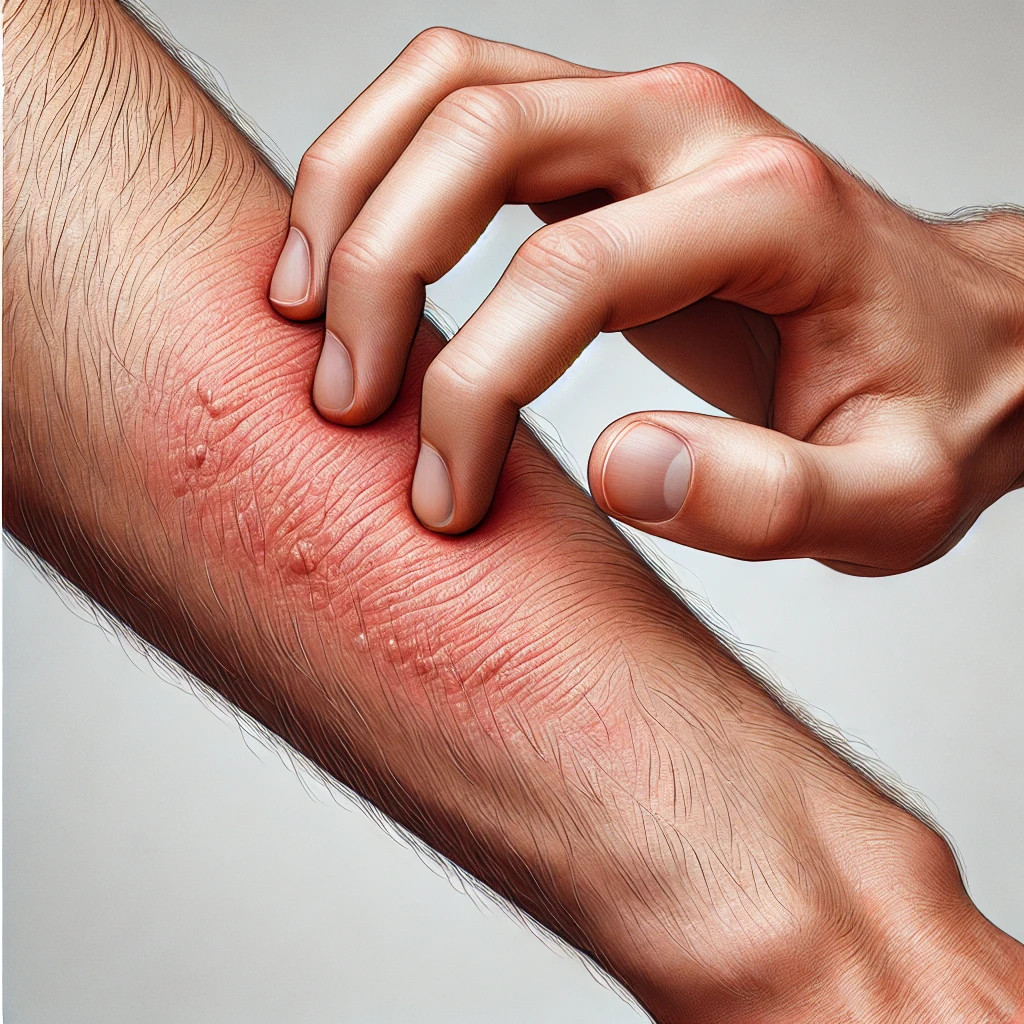
Introduction: Why You Shouldn’t Scratch That Itch
Scratching a rash might feel like a quick fix for irritation, but it often causes more harm than good. While the temporary relief may be satisfying, the damage it inflicts on your skin can lead to long-term issues. From infections to scars, scratching does more than just delay healing—it creates new problems for your skin. Let’s delve into why avoiding the urge to scratch is vital and explore how to soothe your skin safely.
Why Scratching Rashes is Harmful
1. Increased Risk of Infection
Scratching creates tiny tears in the skin, allowing bacteria to enter. This can lead to infections such as impetigo or, in severe cases, cellulitis, where the infection spreads deeper into the skin.
2. Worsened Inflammation
Scratching exacerbates the inflammation, making redness, swelling, and itchiness worse. This creates an “itch-scratch cycle,” where scratching triggers even more itching, prolonging discomfort.
3. Scarring and Pigmentation Issues
Frequent scratching damages deeper layers of skin, causing scars or post-inflammatory hyperpigmentation (dark spots). These marks can take weeks to fade, affecting your skin’s natural radiance.
4. Delayed Healing
Your skin’s natural healing process is interrupted when scratching repeatedly irritates the area, reopening wounds and prolonging recovery time.
5. Skin Thickening (Lichenification)
Chronic scratching can lead to lichenification, where the skin becomes thick, leathery, and rough. This condition alters skin texture and makes managing rashes more challenging.
How to Prevent Scratching
1. Keep Skin Hydrated
Use a high-quality, fragrance-free moisturizer to calm irritation and reduce itching. Look for ingredients like ceramides, colloidal oatmeal, or aloe vera to lock in hydration and soothe the skin.
2. Trim Your Nails
Short nails minimize the damage caused by scratching and reduce the risk of infection.
3. Apply Cool Compresses
A cold, damp cloth placed on the affected area can relieve itching and calm inflammation instantly.
4. Use Anti-Itch Products
Calamine lotion, hydrocortisone cream, or antihistamines can provide immediate relief from itching.
5. Cover the Rash
If possible, cover the area with a light, breathable bandage to prevent unconscious scratching, especially at night.
Fun Fact:
Did you know the sensation of scratching temporarily tricks your brain into feeling pain relief? This is why scratching is so addictive, but mindfulness practices can help you break the cycle.
Recommended Products for Rash Relief
1. Moisturizers
CeraVe Moisturizing Cream: Contains ceramides and hyaluronic acid to restore the skin barrier and lock in moisture. Ideal for soothing dry, itchy skin.
Aveeno Skin Relief Moisturizing Lotion: Made with colloidal oatmeal, this lotion provides calming relief for irritated skin.
2. Anti-Itch Products
Cortizone 10 Maximum Strength Anti-Itch Cream: Contains hydrocortisone to reduce redness, swelling, and itching caused by rashes.
Caladryl Clear Lotion: Combines calamine with pramoxine to relieve itching and protect the skin.
3. Cooling Compresses
TheraPearl Reusable Ice Pack: A flexible ice pack that conforms to the skin to provide instant cooling relief without mess.
4. Gentle Cleansers
Vanicream Gentle Facial Cleanser: Free of fragrances and dyes, this cleanser is suitable for sensitive or irritated skin.
La Roche-Posay Toleriane Hydrating Gentle Cleanser: Hydrates and cleanses without stripping the skin, helping soothe irritation.
5. Protective Coverings
Tegaderm Transparent Film Dressing: Breathable yet protective dressing that helps shield rashes from further irritation while allowing the skin to heal.
Achieve Radiant Skin Despite Rashes
Preventing scratching and following a soothing skincare routine helps restore your skin’s natural glow. Cleanse gently, moisturize regularly, and focus on healing to achieve radiant, healthy skin.
